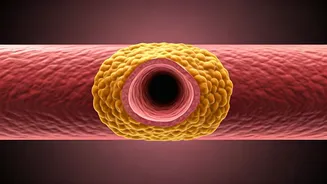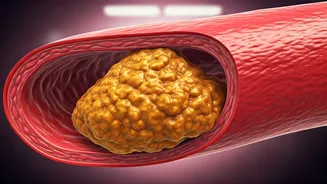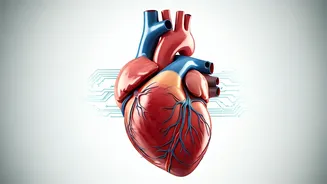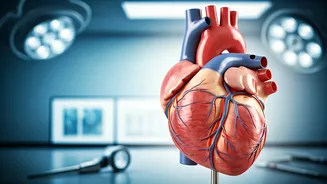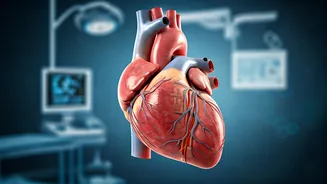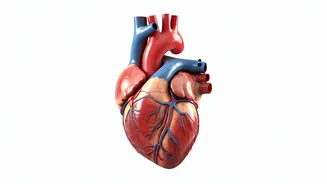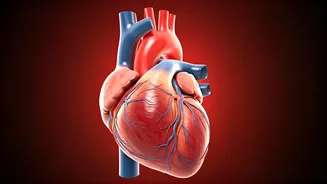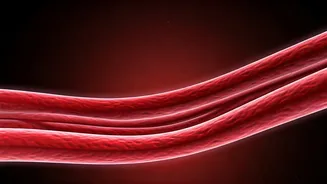What Is Plaque?
Arterial plaque, a major health concern, primarily comprises cholesterol, fats, calcium, and cellular waste products accumulating within the arteries.
This buildup, known as atherosclerosis, causes the arteries to narrow, making it harder for blood to flow smoothly. The formation of plaque is a slow process, often starting in childhood and progressing over the years. Over time, the plaque hardens, the arteries lose their elasticity, and the risk of blockages, leading to serious cardiovascular events such as heart attacks and strokes, increases. Therefore, it is important to understand the factors contributing to plaque development to implement preventative measures and promote heart health.
Formation Explained
The genesis of artery plaque involves several interlinked factors. The process typically begins with damage to the arterial walls, caused by high blood pressure, elevated cholesterol levels, smoking, or other inflammatory conditions. When the artery lining is injured, LDL cholesterol, also known as "bad" cholesterol, starts accumulating in the arterial walls. Over time, the body tries to repair the damage by sending immune cells to the area, resulting in inflammation. These immune cells engulf the cholesterol, forming foam cells, which are the primary components of plaque. As plaque grows, it may become unstable and rupture, triggering blood clot formation, leading to complete arterial blockage, and causing a heart attack or stroke. Understanding this complex process helps individuals make lifestyle choices that can minimize plaque formation.
Risk Factors Involved
Several factors increase an individual's risk of developing artery plaque. Modifiable risk factors include high blood pressure, elevated LDL cholesterol, low HDL cholesterol ("good" cholesterol), smoking, diabetes, obesity, and an unhealthy diet high in saturated and trans fats. Non-modifiable risk factors include age, family history of heart disease, and ethnicity. As one ages, the risk of plaque accumulation increases. A family history of heart disease suggests a potential genetic predisposition. Also, certain ethnicities may have a higher prevalence of heart disease. Managing the modifiable risk factors through lifestyle changes like adopting a heart-healthy diet, regular exercise, smoking cessation, and proper blood pressure and cholesterol management is crucial in reducing the risk of plaque formation and cardiovascular disease.
Preventative Strategies
Preventing artery plaque involves adopting a heart-healthy lifestyle. A diet rich in fruits, vegetables, whole grains, and lean protein, while limiting saturated and trans fats, is essential. Regular physical activity helps to lower cholesterol levels and maintain a healthy weight. Quitting smoking is crucial, as smoking damages blood vessels and accelerates plaque formation. Controlling blood pressure and managing conditions such as diabetes through appropriate medication and lifestyle modifications is also critical. Regular health check-ups and screenings can identify early signs of cardiovascular issues. Following these preventive measures can significantly reduce the risk of plaque development and enhance overall heart health.
Reversing Plaque Buildup
While plaque cannot always be completely reversed, it's possible to slow its progression and potentially reduce its size through various interventions. Aggressive management of risk factors is critical. This includes medications to lower cholesterol (statins), control blood pressure, and manage diabetes. Lifestyle changes, such as adopting a heart-healthy diet, regular exercise, and smoking cessation, also play a key role. Some studies suggest that certain foods, like those rich in omega-3 fatty acids, may help reduce plaque. In severe cases of artery blockages, medical procedures such as angioplasty and bypass surgery may be necessary to restore blood flow. Therefore, a holistic approach that includes lifestyle adjustments, medical treatment, and regular monitoring is essential for individuals aiming to reduce existing plaque and improve cardiovascular health.
The Importance of Diet
Diet is crucial for both preventing and managing artery plaque. A heart-healthy diet emphasizes foods that are low in saturated and trans fats and high in fiber, such as fruits, vegetables, whole grains, and lean proteins. Include foods that contain omega-3 fatty acids, like fatty fish (salmon, mackerel), as they can help reduce inflammation and lower the risk of heart disease. Limit intake of red meat, processed foods, sugary drinks, and excessive sodium. Focus on incorporating various colorful fruits and vegetables into the diet to provide essential vitamins, minerals, and antioxidants. Healthy eating promotes overall cardiovascular well-being by lowering cholesterol levels, regulating blood pressure, and reducing inflammation, thus playing a key role in preventing plaque formation and progression.
Exercise's Role
Regular exercise is a powerful tool in the fight against artery plaque. Physical activity helps to lower LDL cholesterol, raise HDL cholesterol, and control blood pressure. Exercise also aids in maintaining a healthy weight, reducing inflammation, and improving insulin sensitivity. Aim for at least 150 minutes of moderate-intensity exercise, like brisk walking or cycling, or 75 minutes of vigorous-intensity exercise, such as running or swimming, each week. Incorporate both aerobic exercises and strength training to enhance cardiovascular health. Even small amounts of daily activity are beneficial. The combined effects of exercise contribute to reducing the risk of heart disease by positively impacting multiple risk factors associated with arterial plaque.
Medical Treatments
Various medical treatments are available to manage artery plaque and reduce the risk of cardiovascular events. Statins are medications widely prescribed to lower LDL cholesterol levels, slowing plaque buildup. Other medications may be used to control blood pressure, manage diabetes, and reduce inflammation. In cases of severe blockages, procedures like angioplasty, which involves inserting a balloon into the artery to open it, may be performed. Stents can be placed to keep the artery open. In more complex cases, bypass surgery may be necessary, where a healthy blood vessel is used to create a detour around the blocked artery. The choice of treatment depends on the severity of the condition and individual factors, with a combination of medication and lifestyle changes often being the most effective approach.
Regular Monitoring
Regular monitoring is crucial for detecting and managing artery plaque. This includes periodic check-ups with a healthcare provider, who may conduct tests such as blood pressure measurements, cholesterol level assessments, and blood sugar tests. Additional tests, like an electrocardiogram (ECG) or stress test, may be performed to assess heart function. In certain cases, imaging tests such as an ultrasound, CT scan, or MRI may be used to visualize the arteries and identify plaque buildup. Early detection allows for timely interventions, including lifestyle modifications and medication, to slow or reverse the progression of plaque. Therefore, regular monitoring is an essential part of maintaining cardiovascular health and preventing serious cardiac events.
Living a Heart-Healthy Life
Living a heart-healthy life is a commitment to making positive changes that can significantly reduce the risk of artery plaque and improve overall well-being. This lifestyle entails adopting a balanced diet rich in fruits, vegetables, and whole grains while limiting unhealthy fats, processed foods, and added sugars. Regular physical activity, such as walking, jogging, or cycling, is crucial, along with maintaining a healthy weight. Avoiding smoking and limiting alcohol consumption, along with managing stress through relaxation techniques and mindfulness, contribute to heart health. It is essential to undergo regular medical check-ups to monitor blood pressure, cholesterol levels, and other vital health indicators. By consistently making these choices, individuals can protect their hearts and live longer, healthier lives, with reduced risks of heart disease.
